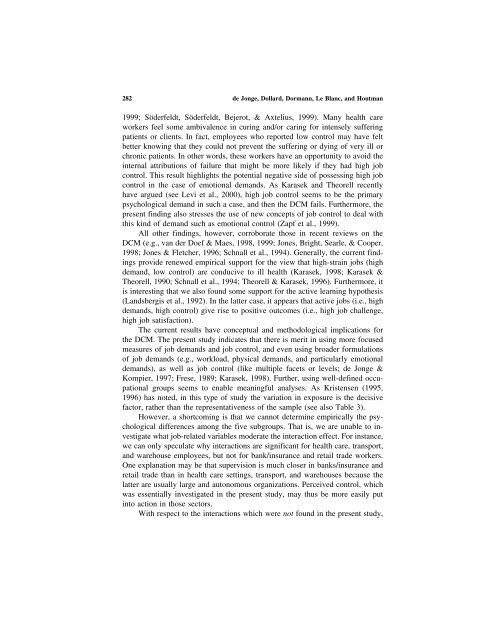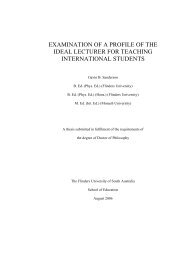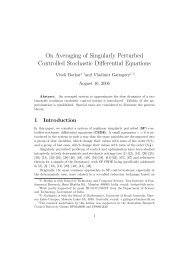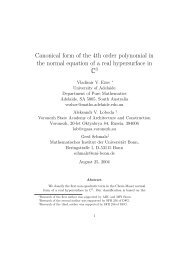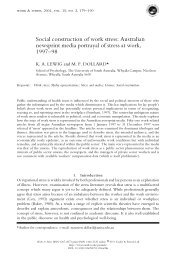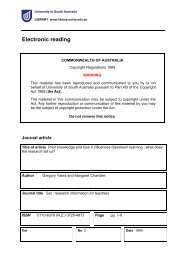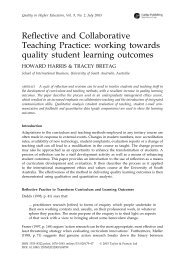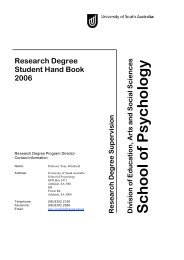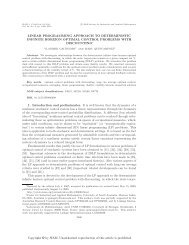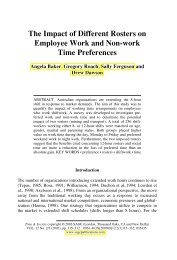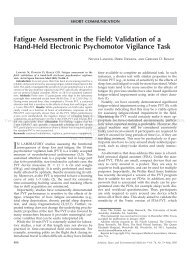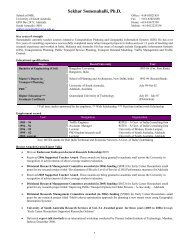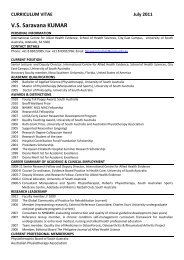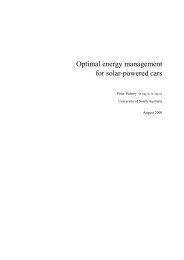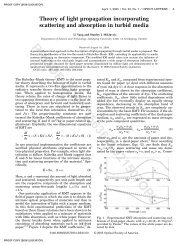The Demand-Control Model: Specific Demands ... - Study at UniSA
The Demand-Control Model: Specific Demands ... - Study at UniSA
The Demand-Control Model: Specific Demands ... - Study at UniSA
Create successful ePaper yourself
Turn your PDF publications into a flip-book with our unique Google optimized e-Paper software.
282 de Jonge, Dollard, Dormann, Le Blanc, and Houtman1999; Söderfeldt, Söderfeldt, Bejerot, & Axtelius, 1999). Many health careworkers feel some ambivalence in curing and/or caring for intensely sufferingp<strong>at</strong>ients or clients. In fact, employees who reported low control may have feltbetter knowing th<strong>at</strong> they could not prevent the suffering or dying of very ill orchronic p<strong>at</strong>ients. In other words, these workers have an opportunity to avoid theinternal <strong>at</strong>tributions of failure th<strong>at</strong> might be more likely if they had high jobcontrol. This result highlights the potential neg<strong>at</strong>ive side of possessing high jobcontrol in the case of emotional demands. As Karasek and <strong>The</strong>orell recentlyhave argued (see Levi et al., 2000), high job control seems to be the primarypsychological demand in such a case, and then the DCM fails. Furthermore, thepresent finding also stresses the use of new concepts of job control to deal withthis kind of demand such as emotional control (Zapf et al., 1999).All other findings, however, corrobor<strong>at</strong>e those in recent reviews on theDCM (e.g., van der Doef & Maes, 1998, 1999; Jones, Bright, Searle, & Cooper,1998; Jones & Fletcher, 1996; Schnall et al., 1994). Generally, the current findingsprovide renewed empirical support for the view th<strong>at</strong> high-strain jobs (highdemand, low control) are conducive to ill health (Karasek, 1998; Karasek &<strong>The</strong>orell, 1990; Schnall et al., 1994; <strong>The</strong>orell & Karasek, 1996). Furthermore, itis interesting th<strong>at</strong> we also found some support for the active learning hypothesis(Landsbergis et al., 1992). In the l<strong>at</strong>ter case, it appears th<strong>at</strong> active jobs (i.e., highdemands, high control) give rise to positive outcomes (i.e., high job challenge,high job s<strong>at</strong>isfaction).<strong>The</strong> current results have conceptual and methodological implic<strong>at</strong>ions forthe DCM. <strong>The</strong> present study indic<strong>at</strong>es th<strong>at</strong> there is merit in using more focusedmeasures of job demands and job control, and even using broader formul<strong>at</strong>ionsof job demands (e.g., workload, physical demands, and particularly emotionaldemands), as well as job control (like multiple facets or levels; de Jonge &Kompier, 1997; Frese, 1989; Karasek, 1998). Further, using well-defined occup<strong>at</strong>ionalgroups seems to enable meaningful analyses. As Kristensen (1995,1996) has noted, in this type of study the vari<strong>at</strong>ion in exposure is the decisivefactor, r<strong>at</strong>her than the represent<strong>at</strong>iveness of the sample (see also Table 3).However, a shortcoming is th<strong>at</strong> we cannot determine empirically the psychologicaldifferences among the five subgroups. Th<strong>at</strong> is, we are unable to investig<strong>at</strong>ewh<strong>at</strong> job-rel<strong>at</strong>ed variables moder<strong>at</strong>e the interaction effect. For instance,we can only specul<strong>at</strong>e why interactions are significant for health care, transport,and warehouse employees, but not for bank/insurance and retail trade workers.One explan<strong>at</strong>ion may be th<strong>at</strong> supervision is much closer in banks/insurance andretail trade than in health care settings, transport, and warehouses because thel<strong>at</strong>ter are usually large and autonomous organiz<strong>at</strong>ions. Perceived control, whichwas essentially investig<strong>at</strong>ed in the present study, may thus be more easily putinto action in those sectors.With respect to the interactions which were not found in the present study,


